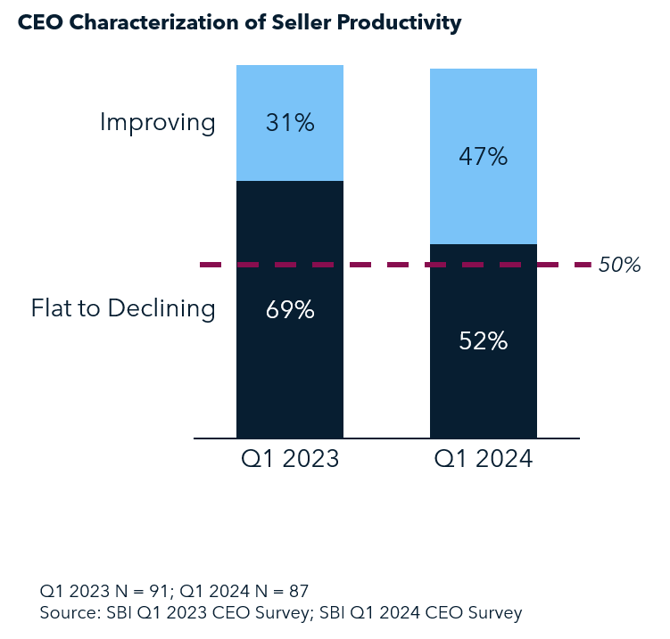Report: CEOs Are Concerned About Their GTM Talent

/479_Thursday%20Research_0.01_LP%20header.jpg)
To make 2024 a significant year for growth, CEOs have many factors to consider before making their next move. Yet from our observations, it seems like CEOs have gotten their strategy, operating model, and product fit right, providing them with the perfect opportunity to capture their value creation goals. But one part of the plan is still uncertain: CEOs still believe that their GTM talent is holding them back from success.
In the third part of our CEO Value Creation Pulse analysis, we explore the GTM talent challenges faced by top CEOs and how you can transform them into key advantages for 2024.
Confident in the Strategy, Questions About the Talent
.png?width=1379&height=578&name=CEO%20Ratings%20of%20Critically%20and%20Adequacy%20of%20Contributors%20to%20Value%20Creation%20Goals%20(1).png)
From our discussions with CEOs and other C-level executives, it’s clear that a confidence gap has formed between strategy and execution ability. While most CEOs are confident in their strategy, a similar majority are hesitant about their GTM talent’s abilities. Our surveys report that while 87% of CEOs agree that having the right people with key GTM skills is crucial to their success, only 46% think they currently have it right. Furthermore, the confidence gap extends beyond the sales organization, even affecting leaders in C-level positions:
.png?width=670&height=513&name=A%20Notable%20Increase%20in%20CEOs%20Expressing%20Lack%20of%20Confidence%20in%20Both%20CROs%20%26%20CMOs%20(without%20title).png)
It's clear that CEOs have also started to scrutinize their top executives as well. However, there are several key points of observations here that you should look out for:
- CEOs are slightly more confident in their C-level leaders now, but a significant majority remains neutral about their key leaders.
- Crucially, there is an alarming increase of CEOs losing confidence in their CROs and CMOs.
- CEOs need to be able to trust their team to execute their strategy effectively in 2024.
For CEOs and GTM leadership teams facing this challenging reality, SBI has two key pieces of advice for you. Firstly, get clear on your needs and expectations across GTM roles. This goes beyond setting well-defined rules of engagement and territories, as buyers and markets evolve, competencies and role expectations also need to adapt. Evaluate how your GTM role design is relevant to your growth plan and address any shortcomings to ensure your organization stays relevant with the buyers, markets, and products today.
Secondly, focus on upskilling sales managers to effectively balance deal and skill coaching with the team. As buyers grow increasingly conservative, take the lead on changing management conversations from where deals are and how to push them forward. Instead, shift emphasis towards helping sellers develop the skills to tailor their messaging to the buyer’s data and buying journey. By transforming your approach to coaching, you help sellers adapt to new buying behaviors and give them a greater chance of success.
Seller Productivity is Improving, But Largely Remains Stagnant

It’s not all bad news from here on out: compared to the same time last year, 16% more CEOs are reporting improvements in their sellers’ productivity. However, more than half of CEOs are still reporting flat to declining seller productivity, showing that despite improvements, there’s still work to be done to help sellers go further in achieving CEO’s value creation goals in 2024.
To help your sellers be more productive, we have a crucial piece of advice: ensure that your GTM organization is well-aligned, and that collaboration remains top priority. Understand where your teams are spending their selling time by conducting time and task audits, identifying points where your teams are engaged in redundant time spend. Once points of improvement have been pointed out, establish clear and distinct RACIs for cross-sell, upsell, and retention activities to reduce overlaps and increase ACV. This initiative would go a long way in helping you accelerate revenue capture and achieving your growth targets faster.
Did you find these insights valuable for your value creation plan? Read the full CEO Value Creation Pulse and learn how you can navigate talent roadblocks in 2024 effectively.